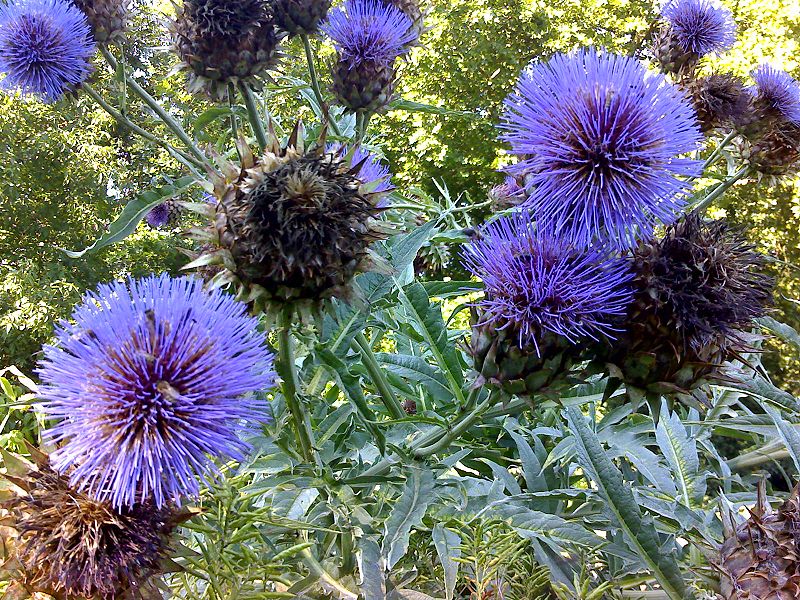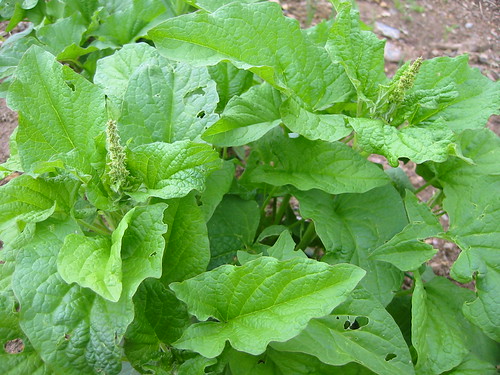Happy New Year to all readers, particularly the followers of the blog - and to start the year a simple but perfect French classic.
I have developed two varients for this posting, the classic French and an Irish version given further down the page that gives a richer, more savoury texture to the dessert.

Classic Clafoutis with plums
Clafoutis is a simple French dessert - very easy to make, super simple, but it looks really impressive.
You can use apples, pears, prunes, blackberries etc.
There are tons of recipes and variations for Clafoutis, including some that want pre-heating and cooling of the milk and cream etc, but this is the simplest, most foolproof way I have found.
Traditionally in France it is made with cherries.In Limousin where the dish comes from if cherries are not used its more properly called Flaugnarde.
You can use most garden fruits for this, I used shop bought plums, sliced and stoned, and my neighbour Judah's eggs which I get in return for kitchen waste that's fed to her chickens.
It is very economical, made with seasonal fruit, eggs, milk, cream and flour.
It's also a real money saver - a great way to use up fruit that is just a little over-ripe so keep an eye on the reduced fruits at the supermarket.
It's a shame to see good food go to waste. We have developed a such a disposable culture, with little regard to seasonal food. I think it is kind of sad and detrimental to cuisine that seasons are no longer really taken into account.
When you grow your own, you do learn to appreciate the seasons and the work it takes to produce more.
Even in street markets, I noticed on a visit to Dublin after the Moore street market closed the Roma Gypsy's were collecting fruit that was just a little over ripe or past its sell by date-so if you want to be totaly surfer feral in saving money supermarket bins are always worth a look.
It is good cold, but best served warm - ideal as a dessert when you are doing other things in the oven like baked potato's - as you will be prepping and serving this after the same meal, using the same temperature.
INGREDIENTS
Varient 1 - Classic French
(The more savory Irish buttermilk version is further down in this post)
100 gm - ½ teacup - sugar (reserve 1 Tbsp. to dust baking dish)
100 gm - 2/3 teacup all- purpose flour
200 ml - ¾ teacup milk
50 ml - ¼ tea cup heavy cream
3 eggs
1 teaspoon vanilla extract
pinch of salt
Knob of
Cuinneog butter - about an ounce - to grease baking dish
Fruit of choice to fill
METHOD
Preheat the oven to 180 deg. C
In a blender, combine all the the ingredients
except the fruit and butter, and blend on high for 1 minute.
Take a good sized baking dish, add butter and put it in the oven until the butter is melted and lightly foaming.
Remove the baking dish and then spread the butter around the base and sides.
Dust a teaspoon of sugar around the base of the dish..
Pour in half the batter.
Now layer in the fruit in the partly filled pan, floating on the lower level of batter
Pour on the remaining batter and bake until the top puffs and starts to turn golden-brown, about 45-60 minutes.
Serve warm with a little flavoured whipped cream, I added lime zest and sherry to mine.
It is a great winter warmer and looks great. If you can make a pancake you can make this.
I actually wish I had a few small oven dishes to do this in individual portions, and may do so in future, but bringing the big warm dish to the table looks great with all the bright colours at this time of year.
Varient 2 - Irish Alternative: Connemara Buttermilk Clafoutis
Apple and Pear Buttermilk Clafoutis
As most regular readers know, I try my best to produce my own ingredients or source them from closer to home. I also love to take recipes and give them an Irish twist. This variation on the classic Clafoutis gives a richer, more savory pastry.
I like to use
Cuinneog dairy products as they are from the next county, but more importantly they really give a great flavour.
INGREDIENTS
100 gm - ½ teacup sugar (reserve 1 Tbsp. to dust baking dish)
100 gm - 2/3 teacup all-purpose flour
200 ml - ¾ teacup
Cuinneog buttermilk
50 ml - ¼ teacup natural Yogurt OR heavy cream
3 eggs
Level teaspoon baking soda or baking powder
1 teaspoon Honey
pinch of salt
Knob of
Cuinneog butter - about an ounce - to grease baking dish
Fruit of choice to fill
The method is identical to the classic version, and takes just a little longer to cook. The above measures take about 50 minutes at 180 deg C in a preheated fan assisted oven.
Apple and Pear Clafoutis served up with sherry flavoured whipped cream
As always, feel free to comment or share using facebook - I really appreciate the feedback


















